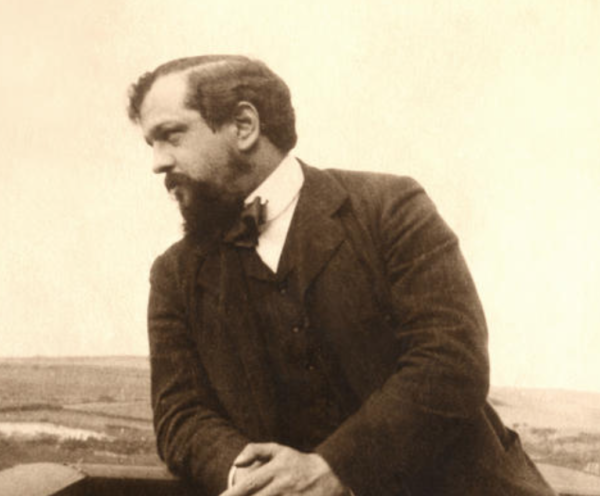Composed 1915; 15 minutes
Composed during the horrors of World War I and after an unusually long period when Debussy felt creatively numbed, En blanc et noir (In White and Black) belongs to a handful of works (the Six épigraphes antiques for piano duet, the three late chamber sonatas and the Douze études for solo piano) that point a way forward for the composer, even amid the uncertainties of a world torn apart by conflict. Debussy was additionally confronting treatments and the resulting financial strain for the advanced colorectal cancer that would end his life before the war was over. The three untitled movements of En blanc et noir become a canvas on which he draws some of his most inspired piano textures. “These pieces derive their color and their feeling merely from the sonority of the piano; if you agree, they are like the ‘greys’ of Velázquez” he wrote to a close friend. The cascading opening arpeggio figures soon confront a more strident, martial element and the two push against one another as ghostly battlefield bugle calls sound in the distance. A quatrain from the libretto to Gounod’s Roméo et Juliette heads the score: “He who remains in place / And does not dance / Admits disgrace / To himself.” Here it suggests, ironically, Debussy’s own frustration of inadequately defending his country – "an allusion to the men who . . . stood aside from the macabre dance of the battlefields, thus confessing to some physical defect," he wrote.
The second movement, Debussy’s preferred movement, is dedicated to Lieutenant Jacques Charlot, a young member of Durand, Debussy’s publisher, recently killed in battle. Debussy appears to take us beyond the battle, to a field strewn with bodies in spare, chilling writing suggesting a profound sense of loss and desolation. The Lutheran chorale Ein’ feste Burg (A Mighty Fortress) is given a stark, dissonant harmonization in a movement headed by text from the 15th century poet François Villon’s Ballade against the enemies of France. Here, darkness and light intertwine in a powerful expression of human emotion. The third movement – or section, perhaps – is dedicated to Stravinsky, and the mood becomes more detached, pointillistic, motor-rhythm driven. The effect is subdued, with a sense of urgency and introspection, however, and the colors are altogether like “the ‘greys’ of Velázquez.”

“I feel I am nothing but a mere atom crushed to pieces in this terrible cataclysm.” – French composer Claude Debussy, August 8, 1914.